Chicago director Rob Marshall breaks down the killer instincts behind 'Cell Block Tango'

Pop. Six. Squish. Uh-uh. Cicero. Lipschitz.
So begins one of the most iconic musical numbers of the last two decades, "Cell Block Tango" from 2002's Chicago, in which the six merry murderesses of Cook County Jail regale Roxie Hart (Renée Zellweger) with the stories behind the murder of the men in their lives — and why every single one of them had it coming.

Everett Collection
The piece, in addition to being a marvel of choreography and cinematography, is a deliciously ironic feminist anthem.
"I was looking for a way of surprising the audience each time we moved into a musical number," director and choreographer Rob Marshall tells EW. "When I saw early drafts of the movie before I came on as director, they all tried to erase the fact that these were presentational vaudeville numbers. Instead of embracing that, they turned them into book numbers where people just sang, or they cut them because it didn't work. I said, 'Guys, if you're going to do this musical, you have to make it a vaudeville. You have to embrace the theatricality of it.'"
For "Cell Block Tango," that's presented quite literally with Roxie stepping out of her jail cell and sitting down at a table to watch the "staged" rendition. Here, Marshall walks us through how he built the killer number.
Tango in the night
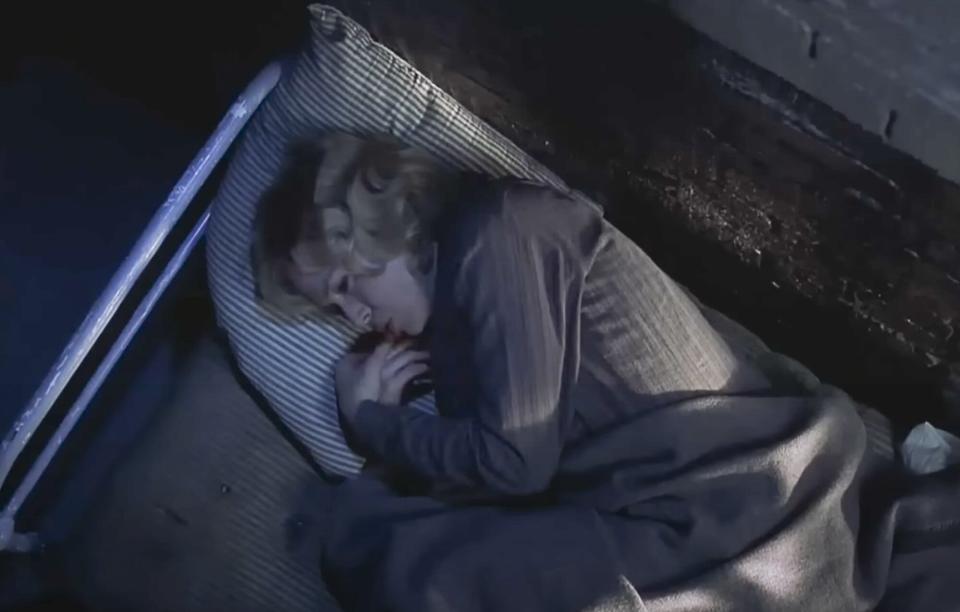
Miramax
In keeping with the idea that all of Chicago's numbers are taking place in Roxie's imagination, Marshall decided to build the number's distinctive rhythm through sounds she would have been hearing in her jail cell: dripping faucets, the footsteps of patrolling guards, nails clicking against jail cell bars, and more.
"I wanted to work from the rhythm of a tango," explains Marshall. "I thought, 'Well, this is Roxie's first night in jail, and she's scared to death. What is she hearing?' And I would think that you're hearing everything amplified. It became all these sounds that then developed into a tango rhythm."
A girl walks into some bars

Miramax
The dance, which breaks the images down into bite-sized close-ups of the things Roxie is hearing, feels like a visual homage to the distinctive style of Chicago's original Broadway director and co-writer Bob Fosse, who was known for his use of isolation. But Marshall says that even if the framing and editing read that way, it was subconscious, as he was actively trying to find ways to differentiate the film from the original stage version. Most notably, this meant introducing male partners to the women's stories to create space for an actual tango to take place.
"There's a lot of Bob Fosse built into the piece because he actually wrote it with Fred Ebb," notes Marshall. "So it's inherent in the piece. But I kept seeing if I could find conceptual differences. With 'Cell Block Tango,' it was all done with women and bars on stage. I chose to do it with an actual tango, so that they could tango with their victims. When you change a concept, it pulls you immediately out of the vocabulary of someone else's work."
Still, the early opening shots of the number, before we get into the monologues of the six women, do pay tribute to the original staging. "The original began behind bars and then, the bars broke apart, and then the whole number was done like that," he says. "I thought, 'Well, we can start there and then depart.'"
Marshall also wanted to translate "Cell Block Tango" into something significantly sexier. For that, he turned to costume designer Colleen Atwood. "The number had a little S&M vibe to it because of the violence," he says. "We were able to work with great boots and straps and things like that in the girls' costumes. So, it's a female empowerment number."
Dance of death
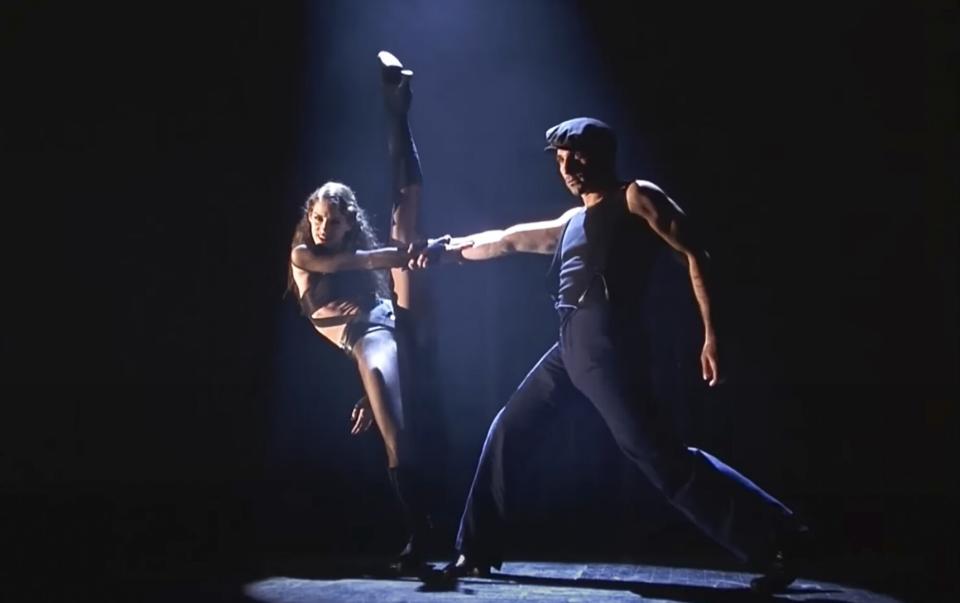
Miramax
The tango between the murderesses and their late partners also introduced a striking visual symbol, that of a red scarf to indicate their victim's death. That was Marshall and co-choreographer John DeLuca's idea.
"We were in rehearsal and I said, 'How can we represent blood? How can we represent the death?'" Marshall recalls. "It began with, 'Let's work with a scarf, a piece of fabric that could represent the blood, and where can it come each time?' Choreographers are authors because there's nothing on the page. You're writing the story of the number. Directors get a scene and they interpret it, and conductors get a piece of music and they interpret it. But choreographers, you have to write what's happening."
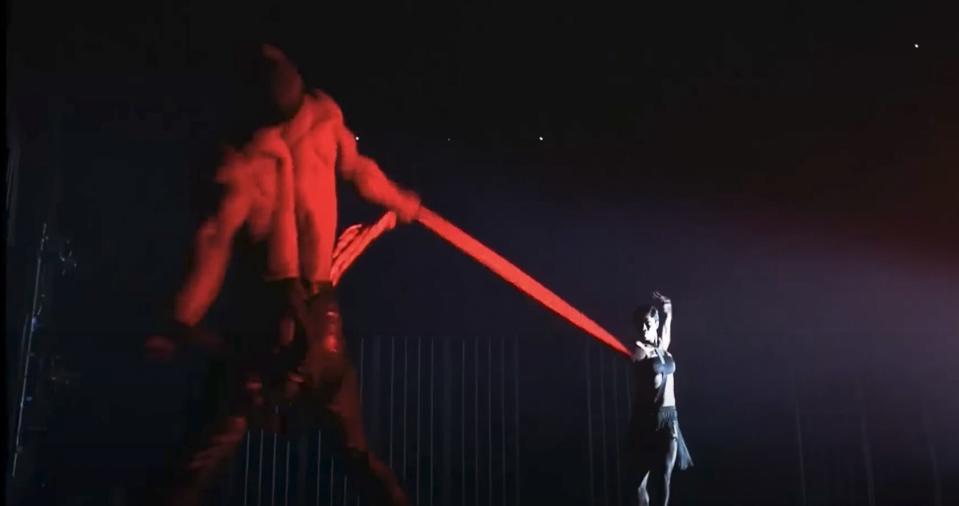
Miramax
Each scarf is unique, both in terms of where it emerges from in relation to the murder, and how the women use them in their dance. One of the most striking is "Squish," who's husband runs into her knife ten times. As this story is told, a very long red scarf emerges, signifying a gushing blood. "She literally knifed him 10 times," Marshall says. "So, we decided to have this long ribbon of blood, and it was so fun to intertwine and move around them and use that as a piece."
Another nuance of the scarves was the ability to convey the tragedy of the one innocent in the mix. "I was excited with the Hunyak [Ekaterina Chtchelkanova], who is actually not guilty," says the director. "We decided to use a white scarf. I thought, How beautiful. We can say she's not guilty with white."
Some guys just can't hold their arsenic
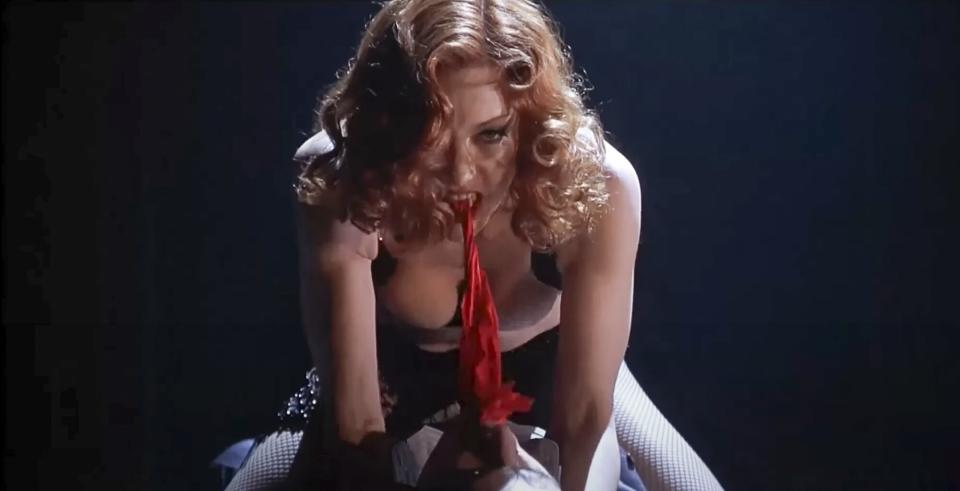
Miramax
Of all the images in the number, perhaps the most striking is "Six" kissing her partner and pulling a red scarf from his mouth. Marshall wasn't exactly sure how this would work or if the dancers would be up for it.
"It had to go down his throat," he explains. "We had two fabulous people, Denise Faye, who was also my assistant choreographer on the film, and Scott Wise, a wonderful Tony Award-winning dancer. I remember saying, 'Scott, can you swallow or put a red scarf in your mouth? Are you going to choke or something?' He said, 'No, of course I can.' I said, 'Denise, are you okay to go and kiss him and then grab that scarf and pull it out of his mouth?' Dancers will try anything."
Real or imagined?
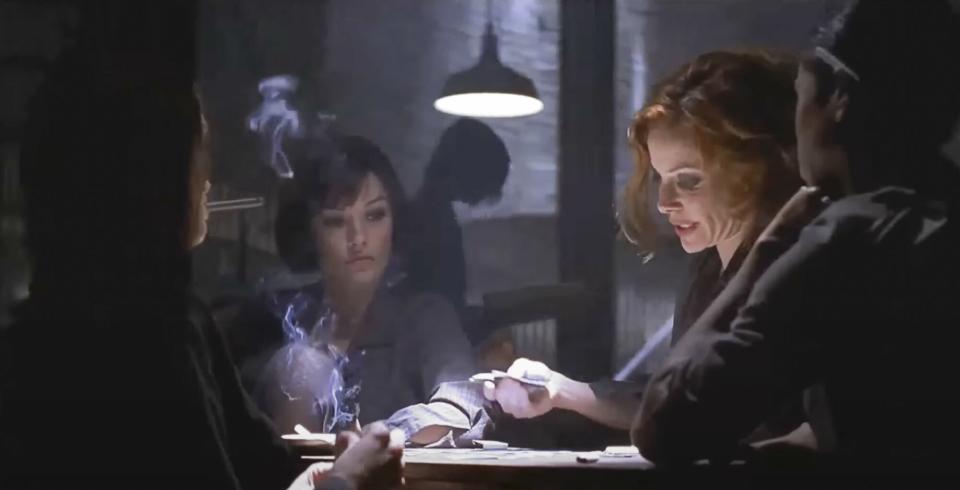
Miramax
To demonstrate that this song exists only in Roxie's mind, it cuts back and forth between the stylized dance number and the reality of the prison where these women are telling their stories over a game of cards, brushing their teeth, and so forth. The events stretch over what is clearly a longer period of time than the compact six-plus minutes of the routine.
Marshall made sure he over-prepared to give himself lots of options in post-production. "I filmed it all so that I would have the choice," he says. "I had a few places where I knew we would cut and go to the reality because there'd be a percussive cut. But I created a full dance for it in case I wanted to stay with the dance longer and similarly with the scenes. It's all monologues, so I did the monologues twice, on stage and in reality, so I had the choice."
Not guilty

Miramax
Besides her white scarf, Marshall wanted to fully distinguish the Hunyak as the only woman in the jail who is actually innocent. Given the slower pace of the music in that sequence, he conceived of a pas de deux and hired a professional ballerina, Chtchelkanova, to play the role.
"I brought that to the sequence," he explains. "All the monologues that were done on stage were just monologues to the audience. But I felt that we could dance these monologues. With hers, the fact that it was a more classical piece of score under her monologue, we could make her different than the rest. So, we hired this fabulous actress and dancer from the Bolshoi and that was really exciting because we had a whole different palette to work from."
Number 17: The Spread Eagle
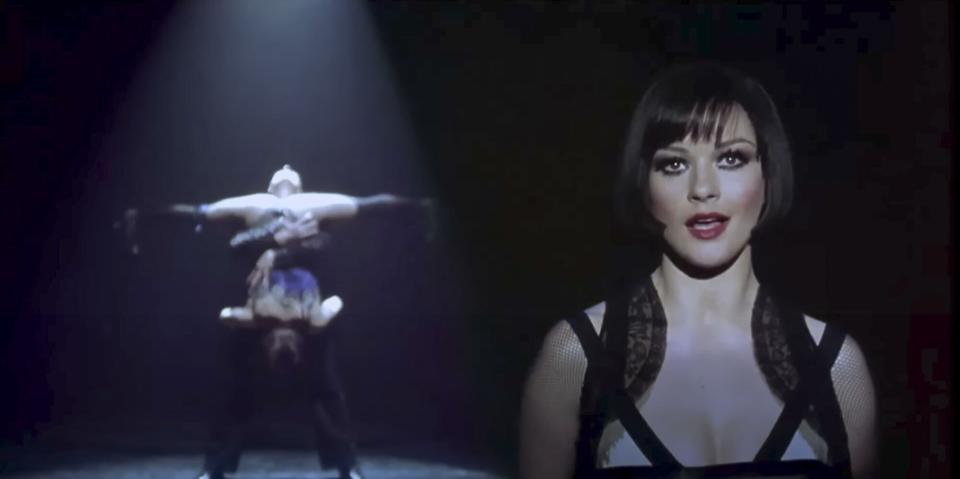
Miramax
Velma Kelly (Catherine Zeta-Jones) is double trouble, having killed both her husband and her sister after catching them in bed together, or as she puts it, "doing number seventeen: the spread eagle," a move from their act. But deciding exactly what that suggestive move would entail was a delicate dance, particularly because Marshall was trying to stay within PG-13 territory.
"I did realize I can't go too far," he says. "We decided to do it upside down. We tried all kinds of crazy things. It's also happening behind her, so it's not too explicit. You have that fine line in terms of taste. You don't want to go too far."
"We tried some lifts," he continues. "But most of them were nixed immediately because I thought, 'No, no, no, we can't go there. Let's leave a little to the imagination.' I like the shape of what it became, with her upside down with the legs. We tried to keep it dance-like, but not too vulgar. It's right on the edge."
They had it comin'

Miramax
After each of the women tell their stories, the number builds to a crescendo, the pulsing chorus of "He had it coming" repeating as the stage fills with dancers and the camera pulls back to reveal levels upon levels of women behind bars, stomping out their rage in perfect time.
The shot has become highly influential and is often use when discussing the film, but Marshall says it would have to be shot entirely different today.
"I was looking at, 'How can I get as many women on a stage as possible?'" the director remembers. "I thought we could have tiers of them. Because I wanted all the women in the jail, and it's very helpful that our jail had a couple levels. I really wanted the whole jail to be going. Of course, we had to go red because we're talking about murder. It was exciting to have those silhouettes of those women. It was so archaic 20 years ago. None of those women up there were on any kind of harnesses, any kind of wires, nothing, no safety. We were just up there doing it, dancing like crazy on these huge, high platforms. That would never happen now."
Chicago is now available in a 20th anniversary limited-edition Blu-ray Steelbook, arriving February 7, 2023 from Paramount Home Entertainment.
Related content:

 Yahoo Movies
Yahoo Movies 
